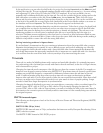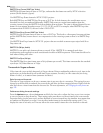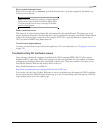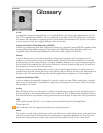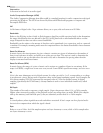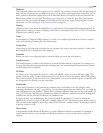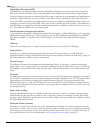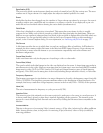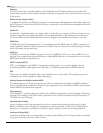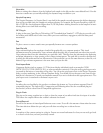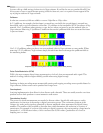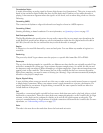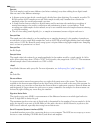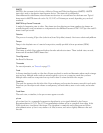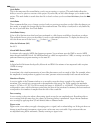
APPENDIX B GLOSSARY
381
Equalization (EQ)
The process by which certain frequency bands are raised or lowered in level. EQ has various uses. The most
common use in Vegas software is to simply adjust the subjective timbrel qualities of a sound.
Event
Media files that have been dragged onto the timeline in Vegas software are referred to as events. An event is
actually a window into a media file and is a reference, or pointer, to the file. It can display all or part of a
media file and can be edited without altering the source media (nondestructive).
Field Order
Video that is displayed on a television is interlaced. This means that every frame of video is actually
composed of two fields, each of which is made up of half of the lines that make the final frame. These two
fields are woven together in alternate lines, but which of the two fields is displayed first (the field order) can
be important. You can set the field order for video in the Project Properties dialog or, when rendering a
project, in the Custom Template dialog. For more information, see Interlacing and field order on page 371.
File Format
A file format specifies the way in which data is stored on your floppy disks or hard drive. In Windows for
example, the most common audio file format is the Microsoft WAV format. However, Vegas software can
read and write to many other file formats so you can maintain compatibility with other software and
hardware configurations.
Frame Rate (Audio)
Audio uses frame rates only for the purposes of synching to video or other audio.
Frame Rate (Video)
The speed at which individual images in the video are displayed on the screen. A faster frame rate results in
smoother motion in the video. However, more times than not, frame rate is associated with SMPTE standard
frame rates for video: 29.97 for NTSC (used in US, North and Central America, parts of South America,
and Japan), 25 for PAL (used in many parts of the world, including Europe and much of Asia), or 24 for film.
Frequency Spectrum
The frequency spectrum of a signal refers to its range of frequencies. In audio, the frequency range is basically
20 Hz to 20,000 Hz. The frequency spectrum sometimes refers to the distribution of these frequencies. For
example, bass-heavy sounds have a large frequency content in the low end (20 Hz - 200 Hz) of the spectrum.
Hertz (Hz)
The unit of measurement for frequency or cycles per second (CPS).
Insertion Point
The insertion point (also referred to as the cursor position) is analogous to the cursor in a word processor. It
is where pasted data is placed or other data is inserted, depending on the operation. The insertion point
appears as a vertical flashing black line and can be moved by clicking the left mouse button anywhere in the
timeline.
Inverse telecine
Telecine is the process of converting 24 fps (cinema) source to 30 fps video (television) by adding pulldown
fields. Inverse telecine, then, is the process of converting 30 fps (television) video to 24 fps (cinema) by
removing pulldown.



